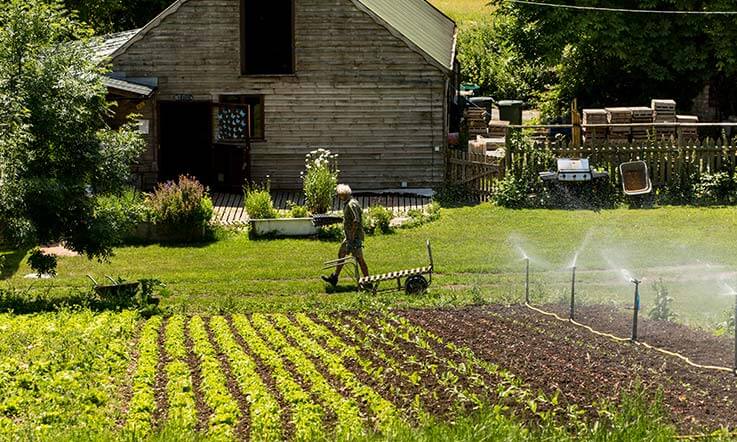Legumes such as white or red clover play a central role for building soil fertility in organic farming and growing. In order to exchange the latest knowledge about forage legumes, a one day workshop entitled “Selecting and managing legumes to maximize fertility and forage production” was held at Abbey Home Farm in Gloucestershire on 23rd February 2012. The workshop was organised by the Institute for Organic Training and Advice (IOTA) and reported on the latest results of the three year Legume LINK project. This ORC-managed, Defra-funded project has been developing new ideas on designing and managing diverse multi-species legume based mixtures. Around 35 participants, including advisers, researchers, growers and farmers, discussed species selection and management strategies to make best use of ley and green manure based systems.
The workshop started by collating current knowledge and experiences on various characteristics of legume species, including black medic and birdsfoot trefoil. This was followed by new information from the Legume Link project about species performance and breakdown characteristics. The talk, presented by Thomas Döring (ORC) also included new results on the suitability of various legume species across the UK under a range of soil and climate conditions. In addition, new findings (PDF 1.3MB) were reported on the effects of these legume species on a following cereal crop.
Hannah Jones (University of Reading) then reported on forage quality trials conducted at the Sonning research farm site, highlighting the benefits that species mixtures can have under environmental stress conditions. Two PhD students from University of Reading gave talks about their legume related research. Rob Brown stressed the importance of legumes for feeding pollinators such as bumblebees and butterflies. Both the identity of the legume species and the management of the ley were found to be crucial for the benefits to pollinators. In particular, including early flowering species such as crimson clover in a ley has major benefits for population establishment of bumblebees. Rachel Roberts from University of Reading gave a presentation on the diversity of nitrogen fixing bacteria (Rhizobia) in agricultural soils. A central hypothesis in her work is that non-native legume species (such as lucerne) require the use of inoculants to be successfully established.
After a visit to a legume ley field trial on the farm, introduced by farm manager John Newman, delegates heard about the use of ecological modeling tools to design multifunctional legume mixtures. Jonathan Storkey (Rothamsted) showed the model in action, evaluating the performance of various legume-based species mixes. Finally, Steve Cuttle (IBERS) showed how to use a decision support tool for nutrient management with organic leys which is being developed within the LegumeLINK project.
